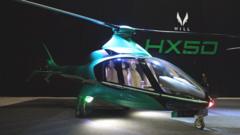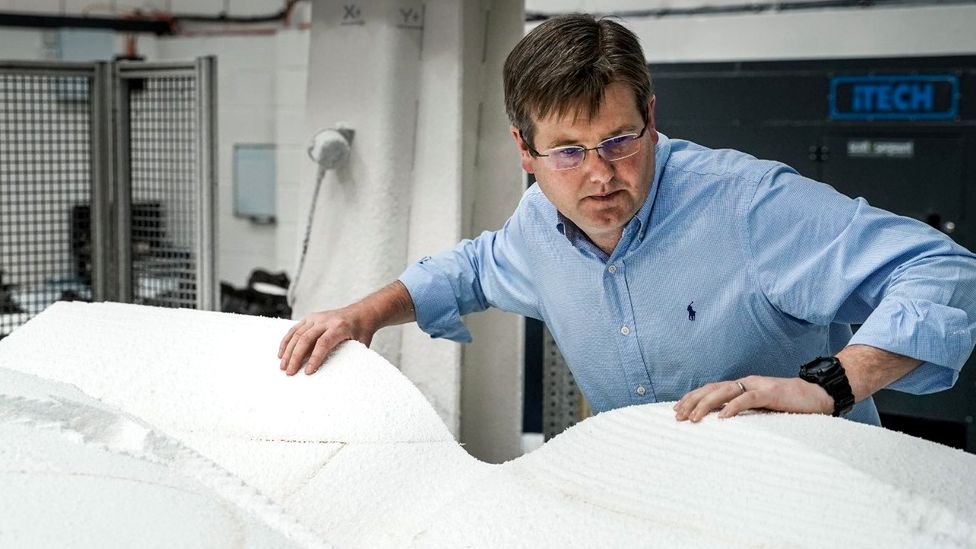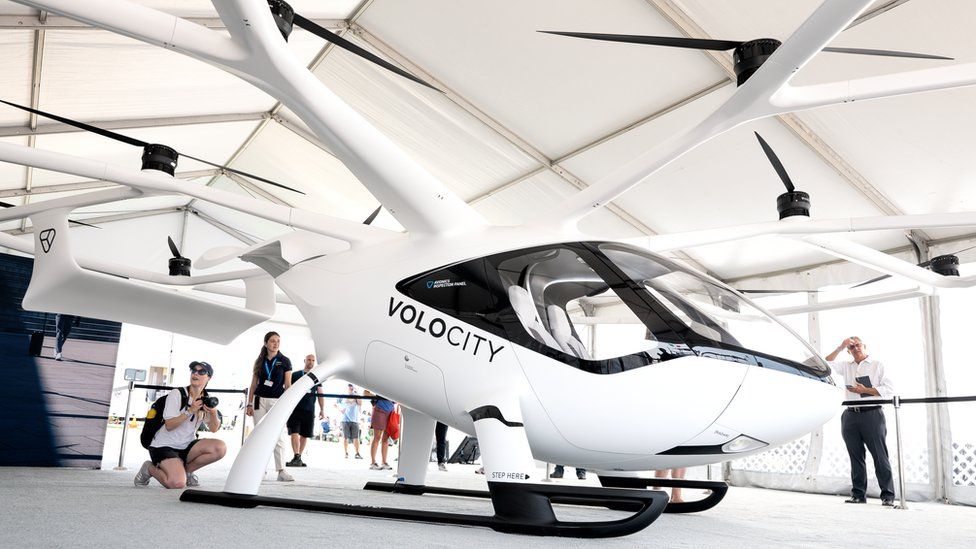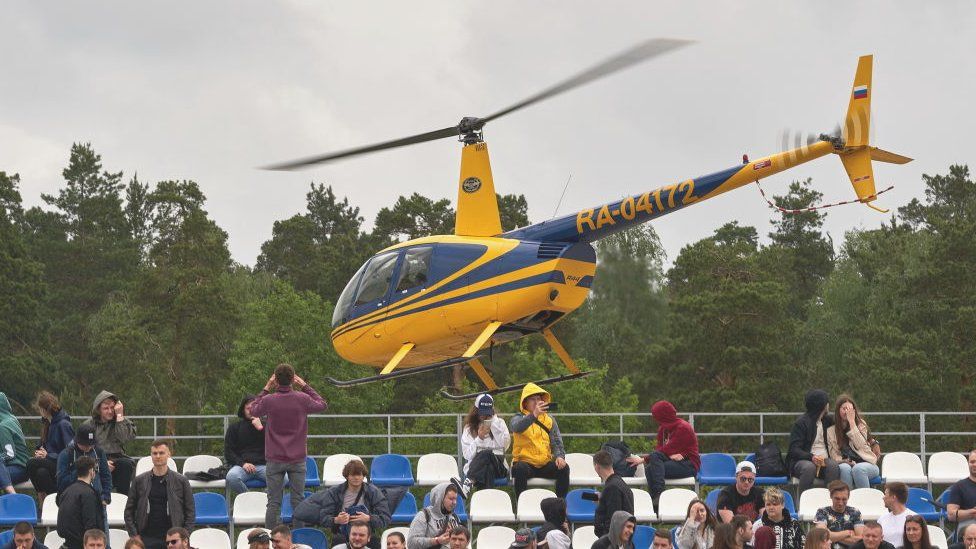Why private helicopters are still in demand


How many children draw helicopters and aeroplanes dreaming of being pilots or designing their own aircraft one day?
Jason Hill was one such teenager, but he clung on to that vision through aeronautical engineering studies and work in the aviation industry.
His dream was revealed to the world on 7 December when the wraps came off a new helicopter designed by him.
“I felt an overwhelming sense of pride and jubilation,” Mr Hill says about the grand unveiling. But creating a new helicopter has been a daunting process.
“The sheer volume of difficult things that need to be executed and coordinated makes the task seemingly impossible,” says Mr Hill.
The five-seater Hill helicopter will be powered by a turbine engine, a small and light jet motor that drives the rotor blades. To keep the weight down the fuselage is made from carbon fibre.
However, with the UK in a cost of living crisis, it seems like a challenging time to launch a luxury product. The Hill machine has a price tag of almost £600,000 – cheap for a helicopter, but for most people completely unaffordable.
Nevertheless, there are buyers. Hill has chalked up 1,222 orders worth £540m. Those buyers have parted with non-refundable deposits of up to £100,000.
And that’s all happened before the helicopter’s first flight, projected for the middle of this year.

Of course, it’s not just Hill that’s able to sell luxury transport options.
California’s Robinson has popularised helicopter flying with a family of small, two to five seat aircraft that have notched up nearly 14,000 sales for the manufacturer.
Robinson’s R66 Turbine costs just over $1m (£790,000) and it sees orders increasing, growing from 101 helicopters in 2022, to a projected 120 units for 2023, and 150 in 2024.
The British Helicopter Association’s chief executive Tim Fauchon doesn’t dispute that helicopter ownership is for the wealthy. “If you’re flying a helicopter you’ve got a bit of cash behind you.”
However it still makes sense to shell out for such a machine when time is of the essence. “You buy a helicopter to save time, it’s an efficient way of getting from A to B.”
And private helicopter owners can recoup their costs by leasing their machine out to flying schools when they’re not using it.
Also, appearing on the horizon, are fresh competitors for the helicopter business.

Electric Vertical Take Off and Landing aircraft (Evtol) have been promoted as the answer to a host of regional and urban transport needs with several hundred projects on the go worldwide.
Powered by batteries and often having multiple rotors, Evtol makers say the aircraft will be cheaper, quieter and easier to maintain than helicopters.
The promise is that one day, such aircraft could bring the convenience of helicopter travel to a much bigger market.
Adam Twidell is working out how to integrate Evtol machines into the operations of private jet club Flexjet, which has ordered an Evtol from Brazil’s aerospace giant Embraer.
Its Eve Evtol machine will, Flexjet hopes, pick up passengers from private terminals and whizz them into city centres.


The challenge for any new flying machine such as Eve or the HX50 is to win regulatory approval says Mr Twidell. He has no illusions over the extent of testing a new aircraft faces.
“In aviation seeing is not believing. Certification means every single part of the machine has to be certified for safety.”
Can Hill emulate the success of Robinson or beat off the Evtol challenge? Mr Hill’s vision involves dispensing with external suppliers and designing and building all components in-house, including the power plant.
The company says 95% of each machine will be constructed in-house, which will result in huge savings, according to Hill.
However industry veterans describe such an approach, as opposed to sourcing parts from established external production lines, as a big challenge.

Hill hopes that it can cut one of the costs of owning a helicopter – the compulsory rebuild that comes after a certain number of hours have been flown.
For a Robinson helicopter with a turbine engine this comes at 2,000 hours and costs $400,000. Hill hopes to stretch that figure to 5,000 hours and replace the engine and gear boxes for $150,000.
Spencer Phillips is head of training at Advance Helicopters, a flying school on England’s South Coast.
Advance uses a mix of Robinson helicopters, which he praises as “a great training aircraft”, but is impressed with the specifications of the Hill helicopter.
He mentions one feature in particular. The Hill aircraft features a fully automated start-up procedure for the tricky task of monitoring temperatures before fuel can be safely pumped into the turning motor.
He explains how this will take a challenging task out of the hands of the private pilot: “It’s far too easy to mess this up with a turbine and melt the engine!”.
He accounts for the rush to pay deposits at Hill by the closed nature of the rotary wing world. “It’s word of mouth in the helicopter community, most of us know each other. Once people started putting deposits down it snowballed.”
